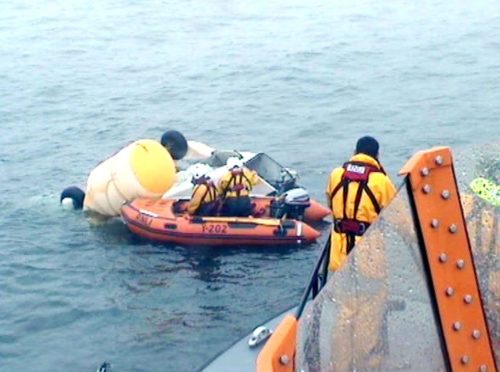There was a “lack of common understanding” between the pilots of a helicopter regarding its approach to Shetland in fog just prior to it plummeting into the sea, a fatal accident inquiry was told.
The Super Puma chopper crashed just under two miles west of Sumburgh Airport on August 23, 2013, in which four offshore workers died on the day, while a fifth victim committed suicide four years later.
Alison Campbell, a senior inspector of air accidents, criticised the pilot and co-pilot on their “brief” prior to the flight regarding the approach to Sumburgh, particularly relating to the reduction of airspeed and height.
She also told the inquiry that neither discussed the prospect of poor weather at Sumburgh and the possibility of a long diversion – as Scatsta, further north in Shetland, and Kirkwall in Orkney were also fogged in.
She said: “There a lack of brief on the approach, a lack of brief on what speed the pilot expected to fly into Sumburgh.
“They expected to be visual on approach. They had not processed mentally that they would be in cloud.
“The pilot flying would be responsible for the brief. They were not sharing the same mental model in the last few minutes of the approach.
“The commander had in his mind his approach, but the co-pilot did not have a full picture of what the commander had decided to do, in relation to speed, pitch.
“His co-pilot was playing catch up. It is difficult to monitor your crew member as you are always behind them.”
A report in 2016 by the Air Accidents Investigation Branch – for which Miss Campbell is an investigator – was referred to in the inquiry which said flight instruments were “not monitored effectively” by the pilots in the moments leading up to the crash.
The AAIB said a lack of monitoring meant a reduction in air speed was not noticed by the pilots and attempts to recover control were too late.
Miss Campbell, who holds a commercial pilot licence for planes and also a private helicopter pilot licence, said: “Both [pilot and co-pilot] have a responsibility of the instruments – for height, speed.
“The role of monitoring the instruments is for both crew. When flying in fog it is all done by instruments.
“There is no delegation to check instruments, particularly in fog.
“They perhaps should have done a more extensive briefing about an approach to Sumburgh. They should have had a mental model of Shetland.
“They were not aware together of what they were facing with the approach to Sumburgh.”
The inquiry has already been told that there was no evidence of any technical fault such as a gearbox failure.
A reduction in airspeed during descent was not noticed by the pilots, the AAIB investigation had found, ultimately leading to the crash.
At some point the chief pilot saw the sea, but he was unable to arrest the helicopter’s descent.
Advocate depute Martin Richardson asked: “Is it fair to say the operational factors were one of, if not the, most important areas of the AAIB report?”
She replied: “Yes. This was a serviceable aircraft that hit the water and had an accident, so the centre of the investigation must be on the people who are operating the aircraft.
“The operations include the pilots themselves, their interaction with the helicopter they are flying, their interaction with instruments around them – anything to do with the human that is operating the machinery.
“Having two crew gives two sets of eyes, two brains and two people’s conscious minds. When two crew work together well. Most commercial flights operates for two pilots, when someone misses something the other will see it. There are check lists.
“Flying is a mental effort and two crew make the burden easier to bear.”
But, she said: “There was a lack of common understanding of how this approach should be done.”
When the speed reduced to 80 knots just over two miles from land the chief pilot increased the collective pitch, intending to maintain the speed.
But the report said the helicopter’s airspeed reduced to below 80 knots and this went unobserved by the crew.
By the time they reached 300 feet above sea level in mist, Miss Campbell claimed: “I think it would have been very unlikely at 300 feet that the helicopter was recoverable.”
Meanwhile, she also told the inquiry that neither had been trained on the “scanning of instrumentation” on the particular model of helicopter involved, but of older types of the Super Puma.
Also, the inspector said the chief pilot had done more flying time on an older model of the Super Puma than the more modern version of the helicopter, which had different operations for carrying out a landing procedure.
The inquiry continues.
- October 20, 2020
- October 20, 2020
- October 19, 2020
- September 14, 2020
- September 11, 2020
- September 10, 2020
